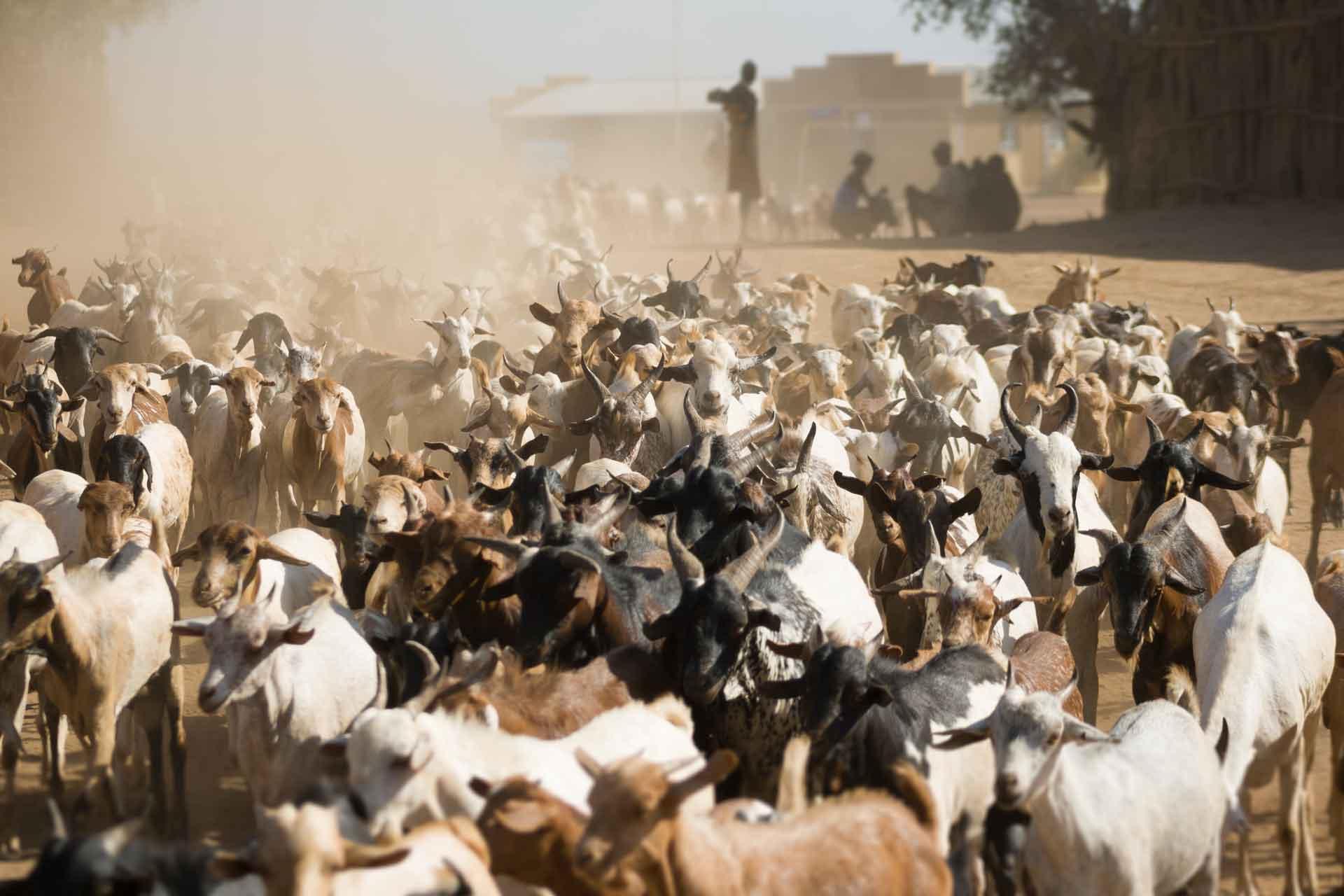Better coordinated vaccine strategies are urgently needed to combat the spread of peste des petits ruminants (PPR); a neglected but devastating livestock disease which now poses a threat to sheep and goat populations in Europe, say scientists from The Pirbright Institute.
PPR, also known as goat plague, is a highly contagious disease caused by PPR virus (PPRV) that infects small ruminants such as sheep and goats and can have a mortality rate as high as 90%. Cattle and pigs can be affected too, but tend not to develop clinical signs.
First reported in 1942 in Western Africa’s Ivory Coast region, PPRV is now prevalent throughout Asia, the Middle East and Africa. It has been targeted for eradication by 2030 by the FAO (Food and Agriculture Organisation of the United Nations) and the OIE (World Organisation for Animal Health). This follows the successful eradication of the related disease rinderpest - a success that Pirbright scientists played a major role in achieving.
Although it remains unclear why the spread of PPRV has been so rapid since its discovery, Pirbright scientists have concluded from their research published in the PLOS one journal, that the lack of a coordinated vaccine strategy has enabled the virus to spread so that it now poses a real risk to Europe via contaminated vehicles returning after transporting animals.
To help improve their understanding about the progression of the virus, Pirbright researchers analysed the spread of PPRV from eastern Africa to the Maghreb region of North Africa. They isolated and characterised the PPR virus from outbreaks on two farms in northern Algeria in October 2015 and sequenced its full length genome (the DNA sequence for an organism’s complete set of chromosomes or inheritable traits). Researchers then compared this to the circulating strain of PPRV within northern and eastern Africa, as well as globally.
Their analysis revealed that one particular lineage of the virus spread along known animal movement routes from east Africa (most likely from an outbreak in Sudan in 2000) into northern Africa (Morocco 2008). The presence of the same virus in subsequent outbreaks in Algeria, Morocco and Tunisia suggests a continual regional circulation, despite mass vaccination efforts in Morocco following the 2008 outbreak.
Professor Satya Parida, Head of the Vaccine Differentiation Group at Pirbright, who led the study said: “PPR is a neglected disease and inconsistent vaccination strategies, coupled with porous national borders in North Africa region where there is significant illegal animal trade, has enabled the virus to persist and spread. Safe and effective vaccines are available for PPRV and there is an urgent need for a more coherent approach to vaccination both regionally and globally.
“The continuous circulation of PPRV in the Maghreb region of North Africa and its recent move towards the northern part of Algeria and Morocco approaching Gibraltar and the extensive trade links with Europe (Spain, France and Italy), has increased the risk of an incursion into Europe and is a significant concern.
“The strict regulation of live animal imports into Europe means the risk of incursion in this way is unlikely, but the transport of animals from Europe to the Maghreb region, particularly towards the end of religious festivals like Ramadan means there is a chance the virus could be transmitted via returning trucks used for transporting animals, and possibly through illegal meat imports. Therefore the effective cleaning and disinfection of vehicles used to transport livestock is essential before they return to Europe, as well as strong customs and quarantine control at sites of entry to Europe from North Africa”.
This research was funded by the Biotechnology and Biological Sciences Research Council (BBSRC) and the European Commission (SP) (BB/L004801/1 and BB/L013657/1).
